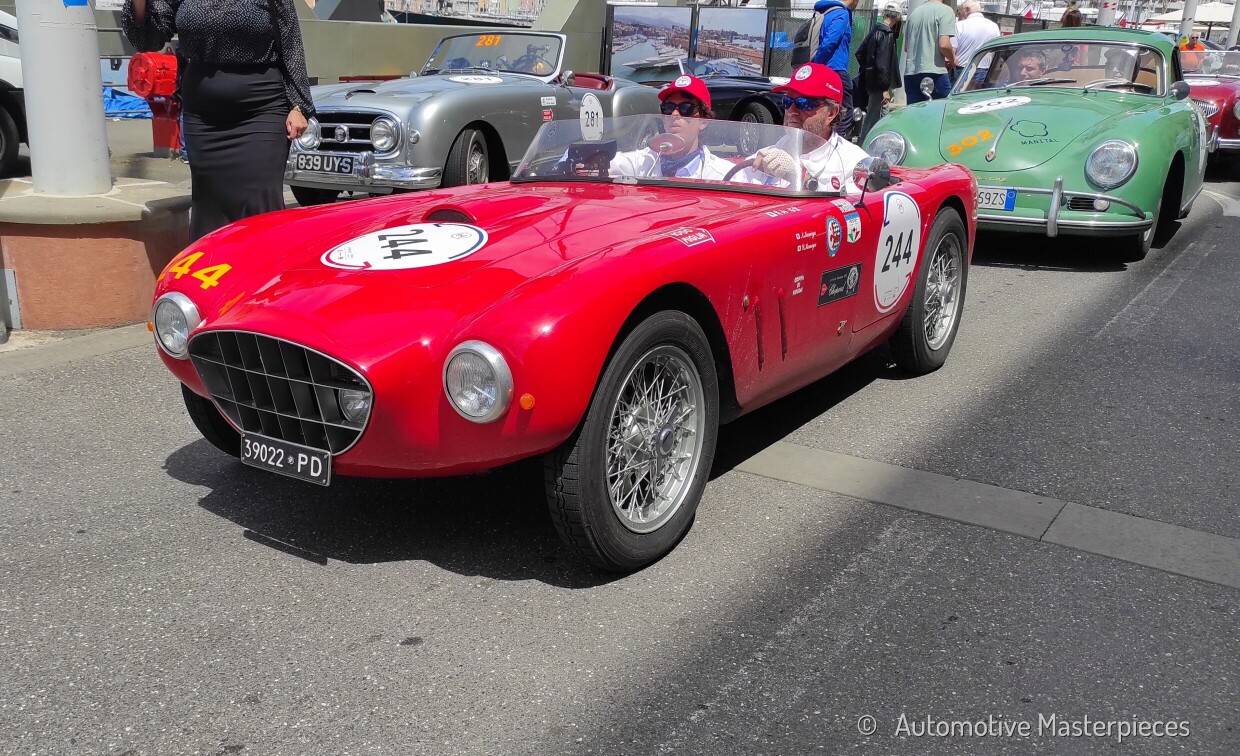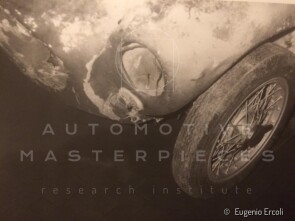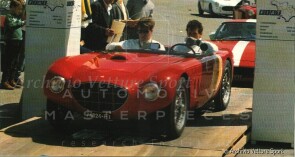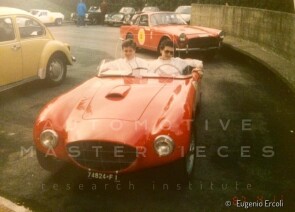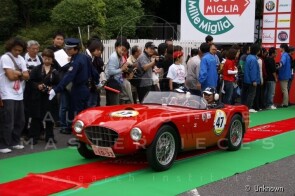
1953 Parisotto Morassutti 750 Sport
ON/OFF
Why am I an Automotive Masterpiece?
L. Limited edition cars
no. 9 manufactured
Mr. Alessandro Parisotto was nicknamed in dialectal Italian “fasso tutto mi,” meaning something like “I do everything myself.” However, despite this self-sufficient claim, the story of the Parisotto cars reveals that several people were actually involved in the creation of this small sports car. In 1949, Scuderia Patavium in Padova decided to build its own racing cars, driven by the same ingenuity and enthusiasm seen in many post-WWII racing teams. The driver-members first found support in Armando Pasqualin, a well-known local mechanic who had already built small sports cars. As was common at the time, many components came from the Fiat Topolino, but the project soon evolved. In 1951, Pasqualin developed a light tubular chassis weighing just 18 kg, which replaced the original Fiat frame. Alessandro Parisotto, one of the founding members of Scuderia Patavium, began building cars around this chassis in 1952. For unclear reasons—possibly disagreements—Pasqualin’s collaboration with the team ended shortly thereafter. A total of nine cars were assembled at the Cesare Rizzato workshop in Padova. Eight of them were built for the driver-members and were intended to compete in the under-750cc class. These cars featured a variety of engines, all within that displacement limit—mainly Fiat units, including at least one Giannini and some Siata versions. One car was powered by a Lancia Ardea engine bored out to 708cc, taken from the Ardor, a one-off built by engineer Enrico Dell’Orto. Dell’Orto also contributed to the design of the distinctive suspension system used in all Parisotto cars: instead of traditional leaf springs, they used rubber elastic elements, anticipating the concept later seen in the Issigonis Mini by several years. It is believed that only three of the nine cars were ever raced. The ninth car served more or less as a spare and was known as the “Morassuti.” The most competitive driver in Scuderia Patavium was Gino D’Angeli, who raced in several events during the 1952 season. The Parisotto cars faded from the racing scene around 1954.
The Parisotto Morassutti 750 Sport, chassis no. 5079653 (ex officio), is the only one of the nine cars built by Pasqualin and Parisotto that never had a racing career. It was immediately registered, in May 1953, to Mr. Paolo Morassutti (from whom it takes its name), a well-known entrepreneur and automobile enthusiast, who was likely its commissioner and may have collaborated in its construction, as he had done with other custom-built sports cars. The car remained in Padua under his ownership for only 15 months. In August 1954, it was sold to Alberto Buitoni and re-registered in Venice; just a month later it changed hands again, this time to Renato Rosselli, a former mechanic with the Ermini workshop, who was presumably working independently by then. Between 1957 and 1964, the car changed ownership four more times, including passing to Count Luigi Guelfi Camaiani, a specialist in heraldry and genealogy. At a later point, the car was involved in a serious accident on Viale dei Colli in Florence, crashing into a tree, with one fatality. As a result, it was impounded for many years and left forgotten in a State Police impound lot, until it was auctioned off in the early 1980s and purchased by Alessandro Ercoli, a passionate collector who already owned another Parisotto, the one equipped with a Lancia Ardea engine. Chassis no. 5079653 was restored in the early 1980s by Francesco Cappelli, a former coachbuilder for Taraschi, in his workshop in Teramo. His son Marco recalls that the car arrived in dreadful condition, but once restored, it was promptly entered in a gathering in 1987 with Alessandro Ercoli’s son, the young Eugenio Ercoli, at the wheel—making his debut, still driving on a learner’s permit. The car received ASI “targa oro” certification in 1994 and in 1997 was exported, sold to a Japanese collector. He entered the car in several major historic vehicle events across Japan, where it was photographed by renowned automotive photographer René. Thanks to those photos, Domenico Morassutti, Paolo’s son and a car enthusiast himself, became aware of the existence of the “eponymous” vehicle and decided to learn more. After an in-depth search, he discovered that his father had been the car’s first registered owner. Convinced to purchase the car back from the Japanese collector, he returned it to Europe in 2022, entrusting the complex import process to expert Bernard Marreyt. Once registered in Belgium and all formalities completed, the car made its return to Italy. After additional bureaucratic steps and the issuance of a FIVA passport, the car was re-registered in May 2024 with its original black Padua license plate (PD 39022). Now cited in various specialist publications, the Parisotto Morassutti Sport is currently entered by its owner in main historic racing events.
